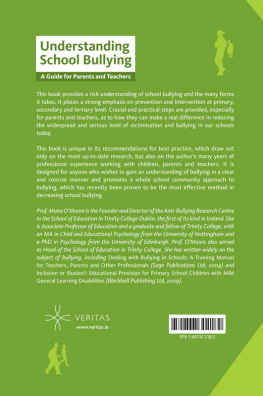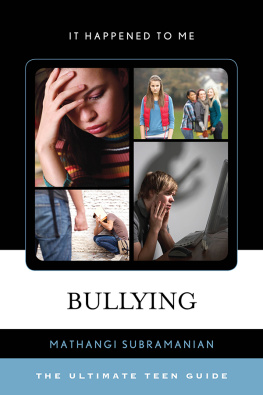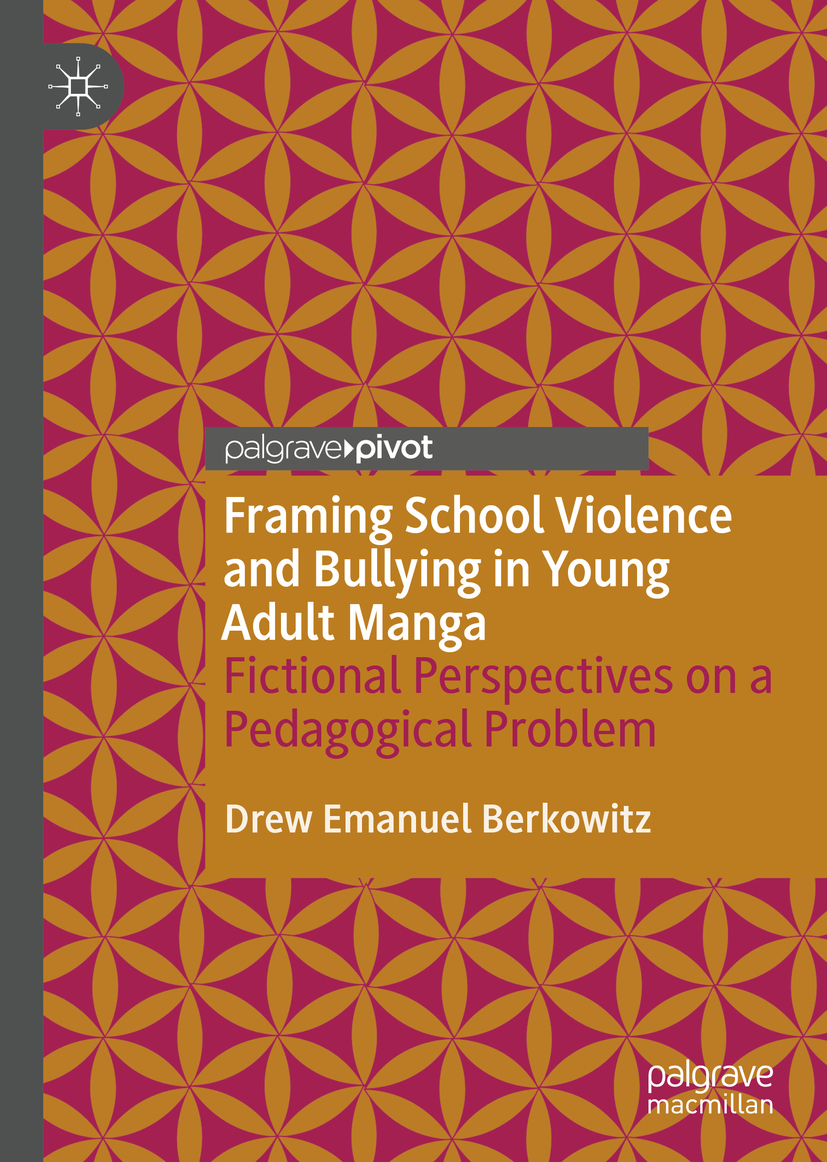Drew Emanuel Berkowitz
Framing School Violence and Bullying in Young Adult Manga
Fictional Perspectives on a Pedagogical Problem
1st ed. 2020
Drew Emanuel Berkowitz
Independent Scholar, Middletown, NY, USA
ISBN 978-3-030-58120-6 e-ISBN 978-3-030-58121-3
https://doi.org/10.1007/978-3-030-58121-3
The Editor(s) (if applicable) and The Author(s), under exclusive license to Springer Nature Switzerland AG 2020
This work is subject to copyright. All rights are solely and exclusively licensed by the Publisher, whether the whole or part of the material is concerned, specifically the rights of translation, reprinting, reuse of illustrations, recitation, broadcasting, reproduction on microfilms or in any other physical way, and transmission or information storage and retrieval, electronic adaptation, computer software, or by similar or dissimilar methodology now known or hereafter developed.
The use of general descriptive names, registered names, trademarks, service marks, etc. in this publication does not imply, even in the absence of a specific statement, that such names are exempt from the relevant protective laws and regulations and therefore free for general use.
The publisher, the authors and the editors are safe to assume that the advice and information in this book are believed to be true and accurate at the date of publication. Neither the publisher nor the authors or the editors give a warranty, expressed or implied, with respect to the material contained herein or for any errors or omissions that may have been made. The publisher remains neutral with regard to jurisdictional claims in published maps and institutional affiliations.
Cover illustration: Pattern Melisa Hasan
This Palgrave Macmillan imprint is published by the registered company Springer Nature Switzerland AG.
The registered company address is: Gewerbestrasse 11, 6330 Cham, Switzerland
This book is dedicated to the victims, victims families, and survivors of the 2019 Kyoto Animation Studio 1 arson attack.
Contents
The Author(s) 2020
D. E. Berkowitz Framing School Violence and Bullying in Young Adult Manga https://doi.org/10.1007/978-3-030-58121-3_1
1. School as a Setting in Young Adult Manga (History and Context)
Drew Emanuel Berkowitz
(1)
Independent Scholar, Middletown, NY, USA
Keywords
Manga Graphic novels Bullying School violence Frame analysis Adolescent media literacy
Young adult fiction often asks its readers to imagine what happens when ordinary young adults find themselves facing extraordinary circumstances. Some of these stories teenage protagonists are suddenly and unexpectedly spirited away to far-off, extraordinary places, such as fairytale landscapes, extraterrestrial vistas, and dystopian futures. Other works depict the ways in which extraordinary problems can suddenly and unexpectedly intrude upon their protagonists everyday lives. However, within the subset of young adult literature known as manga, many protagonists face problems that are presented as neither sudden nor unexpected: problems with classroom violence and school bullying that have sadly become increasingly unextraordinary aspects of the lives of both the stories young adult characters and the stories young adult readers.
When prompted to consider how the issues of classroom violence and school bullying are depicted within young adult manga, one title that might immediately spring to a manga aficionados mind would be A SilentVoice (), a seven-volume series of manga novels written by Japanese author Yoshitoki ima. At the beginning of the first volume of A SilentVoice, high school senior Shoya Ishida is completing final preparations to take his own life. He has cancelled his cell phone contract, quit his job, and saved up enough money to pay back what he feels he owes his mother for raising him. Now, the only thing left to do is to find and apologize to Shoko Nishimiya, a deaf girl whom he mercilessly bullied in sixth grade.
In the six years since Shoya and Shoko last saw each other, Shoya has been subjected to relentless bullying and ostracization from his school classmates. They threw the contents of his locker in the garbage, wrote you should jump off a building on his desk, and beat him up on the way home from school. Shoya has accepted all of his classmates abuse, and has come to believe that he deserves it, chiefly because of what he did to Shoko.
When Shoko Nishimiya was in sixth grade, Shoya Ishida was her bully. Shoya bullied Shoko because she was deaf, but also because he was bored and wanted attention from his classmates, who laughed whenever he made fun of her disability. Shoya and Shokos teacher knew about Shoyas bullying and initially tried to get him to stop, but soon more and more students began to follow Shoyas lead and bully Shoko themselves. Shoya and Shokos teacher quickly lost control of the situation.
After Shoya began stealing and destroying Shokos hearing aids, the school administration became involved. Their teacherdesperate to minimize and downplay his own culpabilityencouraged Shoyas friends to place the blame solely on Shoyas shoulders, making it seem as though the teacher was only negligent about interceding in a single students behavior, rather than the behavior of his entire class. Soon, Shoyas classmates would quickly begin to bully and torment their former friend and ringleader.
Shoya perceived Shoko as the source of his troubles. He would eventually confront the girl, leading to a brutal exchange of blows between the two children, Shokos expeditious transfer to another school, and Shoyas quick realization that Shoko had been staying late after school every day to erase the horrible things that his classmates had been writing on his school desk. At the end of the storys first volume, Shoya finds Shoko, intending to apologize to her, leaving a clear question in readers minds: should Shoko forgive Shoya?
For Shoko, of course, the answer to this question had never been in doubt. Not only had she always been in love with Shoya, butdue to her own lifelong problems with crippling depressionshe had always felt as though she was only bullied because she did not try hard enough to communicate with her classmates and make friends. Later in the story, after Shoyas attempts to prevent Shoko from making her own suicide attempt land him in a coma, Shoko dreams about how much better her life could have been, if only she had been able to hear. Following a volume-long exploration of what Shokos life is like while Shoya is in a coma, many of A Silent Voices young adult readers will certainly be rooting for Shoya to wake up and give Shoko her well-deserved happy ending.
Now, as far as young adult romance novel protagonists go, one would be hard-pressed to claim that Shoya constitutes the most upstanding gentleman that the genre has to offer its adolescent readers. Yet, neither is he a villainous cad, nor a cautionary tale to warn young women about what not to look for in a romantic partner. Instead, A Silent Voice makes careful efforts to never truly portray Shoya as either completely sympathetic or completely despicable. The story continually reminds readers of Shoyas six years of suffering at the hands of his bullies, but it just as frequently reminds readers of the glee and callousness that he exhibited while he was bullying Shoko. In this way,













